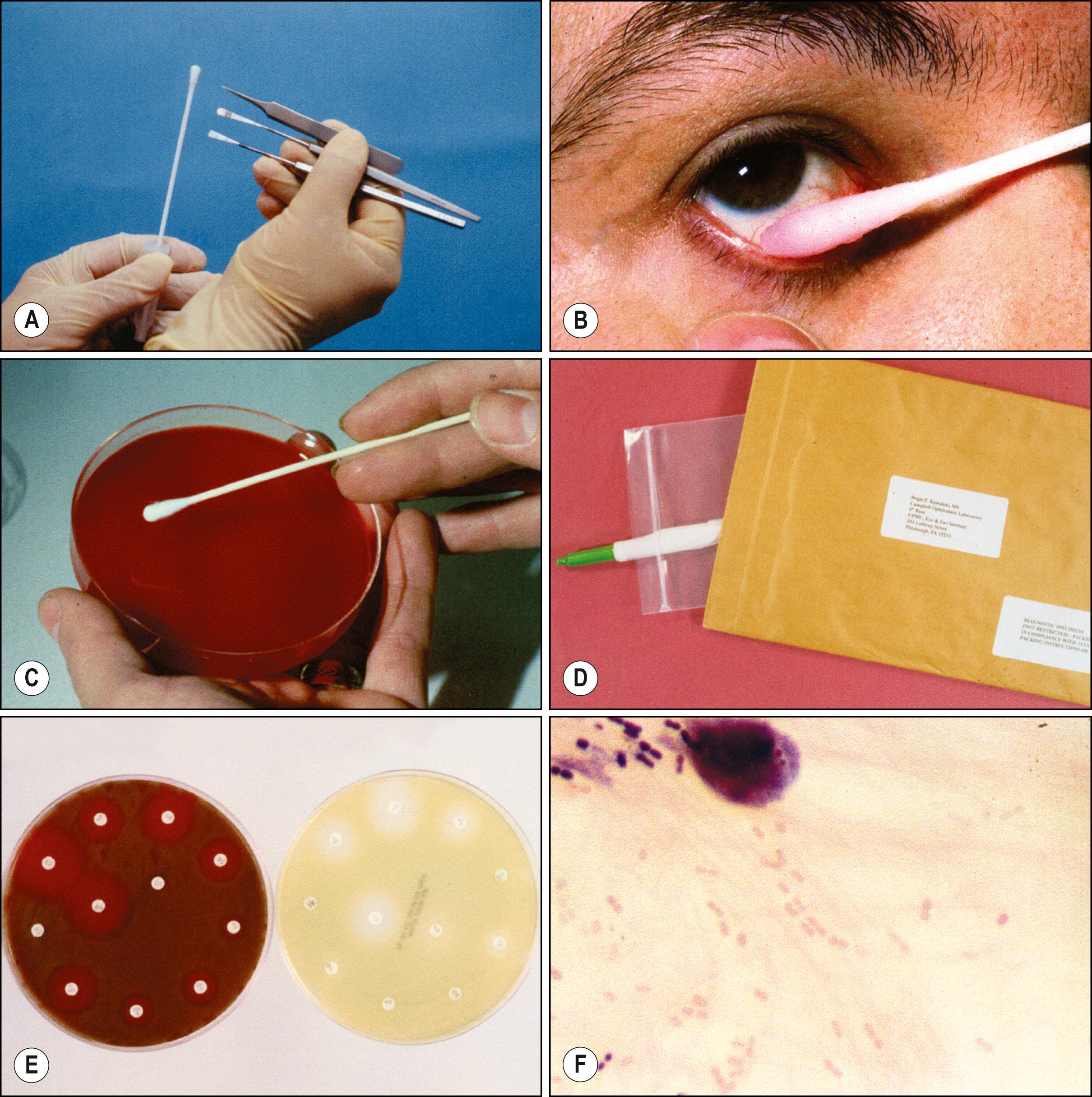Physical Address
304 North Cardinal St.
Dorchester Center, MA 02124
Since specific ophthalmic microbiology testing is not available at all laboratories, ophthalmologists need to locate microbiology testing for their practices.
Microbiology testing must be validated for ocular specimens.
Laboratories, in general, are oriented to systemic treatment and may not provide pertinent antibiotic susceptibility testing for topically treating infectious keratitis.
Definitive methods to detect bacteria, fungus, virus, chlamydia, and Acanthamoeba are available to the ophthalmologist.
Practical laboratory tests for the detection of corneal pathogens provide pertinent information that impacts patient care. Practical tests are highly sensitive, 100% specific, involve easy specimen collection and transport to the testing center, and provide testing results within 24–72 hours, if not sooner. Although technologic advances will provide newer, sensitive tests, laboratories are limited within budgetary restraints to provide only essential testing that are validated. In the United States, laboratories operate under high regulatory standards. Laboratories must be certified for diagnostic testing by CLIA (Federal), JCAH (hospital), State, and CAP (independent) regulatory agencies. Most laboratories process specimens for routine and frequent repetitive testing because of cost-effectiveness and the ease to validate testing proficiency, which is necessary for reimbursement. Infrequent testing is not cost-effective due to overhead costs (waste of perishable media) and the necessity of dedicating valuable laboratory personnel for a few tests. Infrequent testing is generally handled with batch testing (waiting for an accumulation of similar testing) that delays laboratory results or by referring the specimens to a reference laboratory (a large hospital or government laboratory). It is very difficult for a laboratory to validate testing for an infrequent pathogen because of the lack of true positive specimens that may require an extended time to collect.
Many ophthalmologists will find it difficult to locate microbiology laboratories that cater to specific ocular infectious disease testing in a timely fashion. As this chapter will demonstrate, ophthalmic microbiology is unique but not necessarily so high-tech that diagnostic testing is not available. Ophthalmologists will have to investigate the availability of laboratory testing that is pertinent to their practice. This chapter will describe the best practical tests that are available for the detection of corneal pathogens. The ophthalmic microbiology tests presented in this chapter were established in a modern, fully certified, clinical laboratory that caters exclusively to detecting corneal and ocular pathogens. Details of these tests are frequently updated on our website http://eyemicrobiology.upmc.com .
Direct communication of the ophthalmologist/attending physician with the diagnostic laboratory is essential. The laboratory must understand the specific needs of the ophthalmologist. The ophthalmologist must communicate the type of specimen, the possible pathogens involved in infection, and specific antibiotic susceptibilities that must be tested. Unusual pathogens (mycobacteria, Acanthamoeba , etc.) require planning and acquisition of media. Simply sending a single soft-tipped applicator to a laboratory and requesting isolation of all possible pathogens (bacteria—aerobic and anaerobic, virus, fungus, Acanthamoeba , etc.) is unreasonable, and valuable time is lost for the ophthalmologist, patient, and laboratory. In general, central laboratory tests are not validated for ophthalmic specimens, and laboratories may choose not to jeopardize their accreditation for ophthalmic microbiology testing.
Corneal specimens can be collected with spatulas, jeweler’s forceps, and surgical blades ( Fig. 9.1 ). Soft-tipped applicators can be used when less aggressive cultures need to be obtained or when less distinct areas of infection over a large area require culture. Sometimes, after an instrument is used, an additional specimen can be obtained with a soft-tipped applicator at the infected site. The instruments are used to collect specimens for planting media and placing on glass slides for cytology and organism examination. Each ophthalmologist should determine which collecting instrument is most comfortable and provides the best specimen for laboratory diagnosis. In general, swab collection is not optimal for cytology examination and the observance of organisms.

Conjunctival cultures can be diagnostic when corneal cultures are negative due to antibiotic pretreatment (see Fig. 9.1 ). Conjunctival specimens are collected with soft-tipped applicators (cotton or Dacron) with plastic handles (see Fig. 9.1 ). Although calcium alginate swabs have been reported to produce a higher yield of bacterial organisms, these swabs can produce false-positive results in liquid media, viral cultures, and artifact in Acanthamoeba cultures (personal experience).
Direct inoculation of isolation media is best, but this approach is not always possible. There are many transport systems for supporting bacteria, virus, and chlamydia prior to direct inoculation on proper isolation media. The ophthalmologist should ask advice from the laboratory on suggestions for transport media and reliable delivery of specimens to the laboratory.
Diagnostic specimens can be easily delivered through couriers and public mail with a few simple requirements, as mandated by federal law. These samples must be double-sealed to prevent any leakage of sample. A proper amount of desiccant to absorb any leakage due to damage should also be packed within the double-sealed specimen. The sample should be marked to indicate that the package is a diagnostic specimen. For example, a corneal specimen collected on a soft-tipped applicator should be placed in a plastic tube (transport sleeve, Culturette [Becton Dickinson, Sparks, MD]), wrapped in a paper towel, enclosed in a sealable vinyl zip-locked bag, placed in a bubble mailer addressed to the laboratory, and marked as “Diagnostic Exempt Human Specimen (Shipping paper is not required) (Packed in Compliance with IATA Packing Instructions 650)” (see Fig. 9.1 ).
Become a Clinical Tree membership for Full access and enjoy Unlimited articles
If you are a member. Log in here